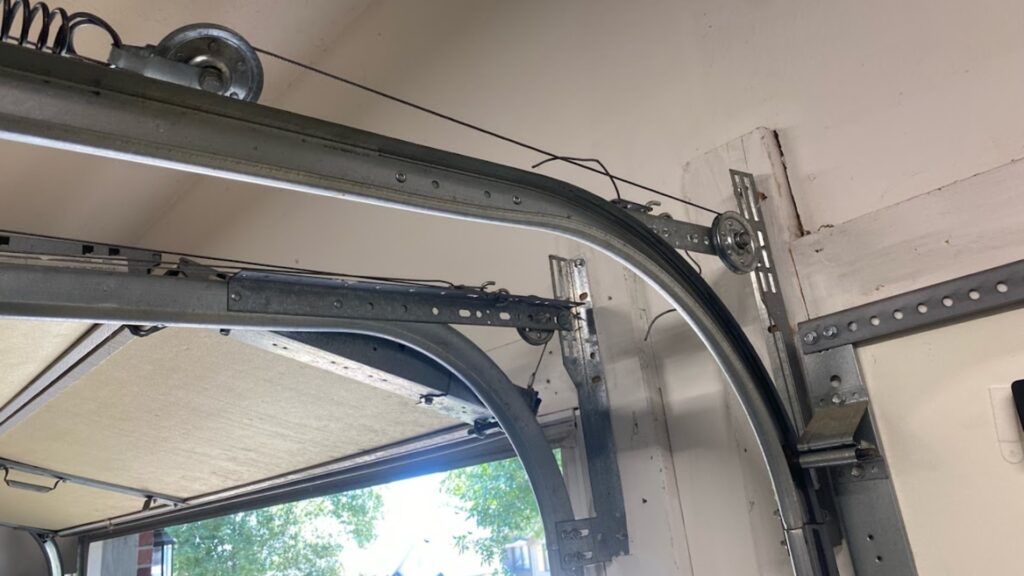
xr:d:DAFTrEuBahw:202,j:8724994334862986986,t:23070906
Your garage door is one of the largest visible surfaces on your home’s exterior—but it’s also one of the most commonly neglected. Between exposure to dust, pollen, road salt, spider webs, and oil splatter, garage doors and their tracks can collect serious grime over time. 🕸️🛢️
Fortunately, pressure washing offers an efficient, effective way to keep your garage door looking fresh while also extending its lifespan. But before you blast away, it’s important to know how to clean this surface safely—especially when working around moving parts and painted finishes.
This guide will walk you through the best practices for pressure washing garage doors and tracks without causing damage. Let’s get started! 💪
🚪 Why Clean Garage Doors Regularly?
Cleaning your garage door isn’t just about appearances. A buildup of dirt and grime can lead to:
- Corrosion or staining on metal doors
- Chipped or faded paint from harsh buildup
- Track obstructions affecting the door’s movement
- Malfunctioning sensors due to dirt or spider webs
- General decline in curb appeal and home value
Whether you’re doing seasonal maintenance or prepping for a home sale, a clean garage door makes a big difference. 🏡✨
🧰 Tools & Supplies You’ll Need
Here’s what you’ll want on hand:
- Pressure washer (1,200–2,000 PSI for residential doors)
- 25° or 40° spray tip
- Biodegradable exterior cleaner or mild detergent
- Soft-bristled brush or sponge
- Bucket
- Ladder or step stool (for reaching upper panels)
- Protective gloves and eyewear
- Towel or drying cloth
Avoid using bleach or highly acidic cleaners—they can damage paint, aluminum, or vinyl finishes.
Browse Amazon Here For Top Rated Power Washers And Accessories
🧽 Step-by-Step: Pressure Washing Your Garage Door
1. Close the Door Fully
Make sure the garage door is fully closed and secured. If you have an automatic door, disconnect the opener to prevent accidental movement.
2. Clear the Surrounding Area
Remove any nearby objects like potted plants, bikes, tools, or trash bins. Cover outlets, lights, or sensors with plastic to protect them from water spray.
3. Rinse First
Use the pressure washer with plain water to rinse off loose dirt, cobwebs, or pollen. This step helps reduce surface scratching when you apply cleaner.
Use a 25° nozzle and hold the wand 12–18 inches from the door.
4. Apply Soap or Cleaner
Apply a gentle cleaner using the detergent tank of your pressure washer or a pump sprayer. Focus on stained or greasy areas (like near the bottom panel).
Let the soap dwell for 5–10 minutes, but do not let it dry out. This gives it time to loosen grime and break down residue.
🧴 Pro Tip: Use a soft brush or sponge to gently scrub tough spots.
5. Rinse Thoroughly
Switch back to plain water and rinse the garage door from top to bottom using overlapping strokes. Make sure no cleaner or soap is left behind, especially around seams or hardware.
Pay close attention to:
- Panel creases
- Hinges
- Window trim (if applicable)
🛠️ How to Clean Garage Door Tracks
Cleaning the tracks doesn’t require full pressure—but it does require attention:
- Turn off your pressure washer. Manually inspect the tracks.
- Use a brush or cloth to remove cobwebs, dirt, and gunk inside the tracks.
- If needed, spray the inside of the tracks with a gentle stream (not direct pressure) to avoid bending or dislodging parts.
- Dry the tracks with a towel and re-lubricate the rollers using a silicone-based lubricant.
⚠️ Never aim a pressure washer directly at garage door springs or sensors—they’re sensitive and expensive to replace.
🧼 Cleaning Different Garage Door Materials
Metal (Aluminum or Steel):
- Can handle more pressure
- Watch for signs of rust or chipping paint
- Rinse thoroughly to prevent oxidation
Wood:
- Use the lowest pressure possible (under 1,200 PSI)
- Avoid soaking the surface
- Reseal or repaint if necessary after drying
Vinyl or Composite:
- Use a 40° nozzle
- Gentle soap and soft bristle brush recommended
- Watch for warping in high heat
📅 How Often Should You Clean Your Garage Door?
For most homes, twice a year is sufficient—usually in spring and fall. However, you may want to clean more frequently if:
- You live near the coast (salt air) 🌊
- Your home is close to a dusty road or construction site 🚧
- Pollen is heavy in your area 🌼
- You park vehicles outside that generate a lot of dust
Regular cleaning also gives you a chance to inspect the door’s condition and catch issues early—like rust, warping, or cracks.
🧽 Drying and Aftercare
After rinsing, dry the door thoroughly using a soft towel or let it air dry if the weather is warm. If your door is painted, inspect for chips or flakes and touch them up as needed.
For metal doors, consider applying a UV-protective wax or polish to add shine and resist future dirt buildup.
💡 Additional Tips
✅ Clean in the morning or late afternoon to avoid streaks from hot sun
✅ Don’t forget to clean the weatherstripping at the bottom of the door
✅ Check and clean photo-eye sensors to ensure proper function
✅ Avoid pressure washing in freezing temps to prevent ice formation ❄️
🧼 Final Thoughts
Pressure washing your garage door is a quick win that delivers big results—both in curb appeal and functionality. With a little care and the right tools, you’ll have a garage door that’s clean, safe, and welcoming in no time. 🚪✨
Remember to match the nozzle and pressure to the material, avoid delicate hardware, and give the tracks some love while you’re at it. It’s an easy weekend task with lasting benefits.
Browse Amazon Here For Top Rated Power Washers And Accessories



